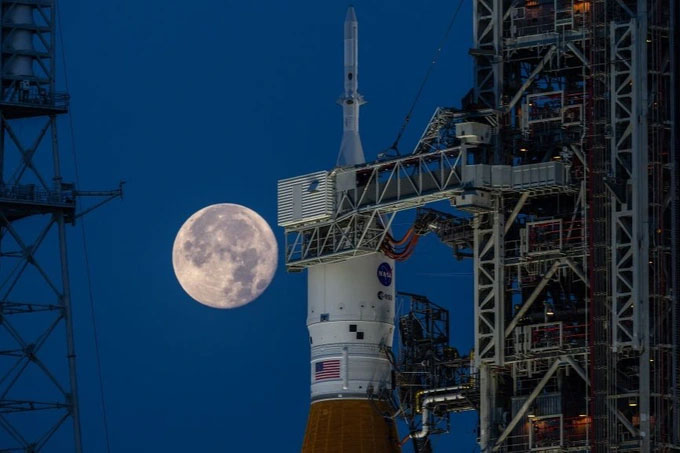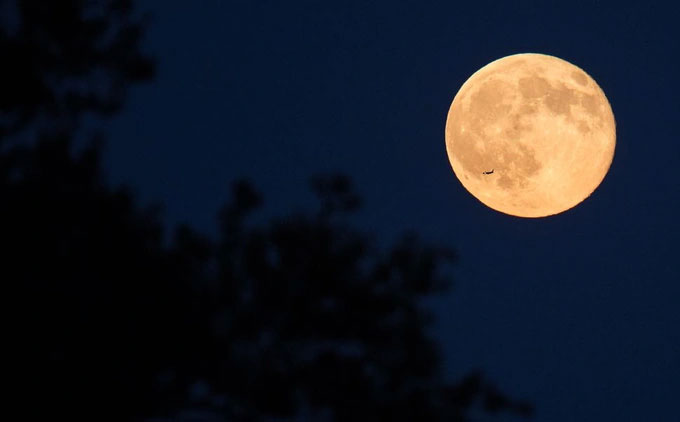At 4:00 PM tomorrow, July 13, the Moon will be at its closest point to Earth this year.
At 4:00 PM tomorrow, July 13 (Vietnam time), the Moon will be at its closest position to Earth during its orbit in 2022. At this time, the distance from Earth to the Moon will be 357,264 km.

An image of a supermoon at sunset. (Photo: Getty).
Thirty-eight minutes later will be the moment of the full moon. Theoretically, a full moon occurs at a single instant, but using common observation methods, the moments before and after this point are also considered a full moon because the shadow caused by the eclipse is very narrow and changes so slowly that it is difficult for the naked eye to notice. Therefore, after sunset on the evening of July 13, if you look up at the Moon, remember that it will not be a perfect full moon anymore.
More than ten years ago, hardly anyone cared about the concept of a “supermoon.” So how did the term “supermoon” become popular and attract so much attention today?
The term “supermoon” was first used by astrologer Richard Nolle in 1979 in an article for the American astrology magazine Dell Horoscope. At that time, he explained that a supermoon occurs when a full moon appears at a distance from the Moon to Earth that is equal to or greater than 90% of the distance from its apogee to perigee in its orbit around Earth.

A supermoon appears behind the Artemis 1 rocket on June 14, 2022. (Photo: NASA/Ben Smegelsky).
Interestingly, when Nolle introduced this concept, few paid attention to it. However, suddenly on March 11, 2011, when the 9.1 magnitude Tohoku earthquake struck off the northeastern coast of Honshu, Japan, the “supermoon” became famous.
Eight days after the earthquake, a full moon coincided with its perigee in its orbit around Earth, leading to many theories suggesting that it was the cause of the devastating earthquake in Japan. One of the first to assert this was Nolle, who claimed that supermoons could cause “geophysical stress.”
Thus, the term “supermoon” suddenly appeared in major news outlets.
What distinguishes a supermoon from a regular full moon?

An airplane flying past the Moon on July 31, 2015. (Photo: NASA/Joel Kowsky).
The two most mentioned aspects of a supermoon are that it is 14% larger and 30% brighter. However, to be precise, these numbers of 14% and 30% are compared to a full moon at its farthest point, not when it is at its closest point in orbit. Thus, a supermoon is only about 0.28 degrees brighter than a regular full moon. Therefore, don’t be too disappointed if you observe that the supermoon does not appear significantly brighter than other full moons.
Regarding its appearance being 14% larger, while the supermoon occurring this Wednesday is the largest of the year, to notice a clear difference, it is best to observe the Moon during moonrise or moonset; at the zenith, it does not look much different from a regular full moon.
Additionally, because a supermoon occurs during a full moon at a distance equal to or greater than 90% of its apogee and perigee, there can be more than one supermoon each year. Some years have three supermoons, some have four (like this year), and there can even be five (as in 2020 and 2033). Therefore, if the supermoon this Wednesday is obscured by clouds, don’t be disheartened, as there will be another supermoon to admire on August 11, 2022.

















































